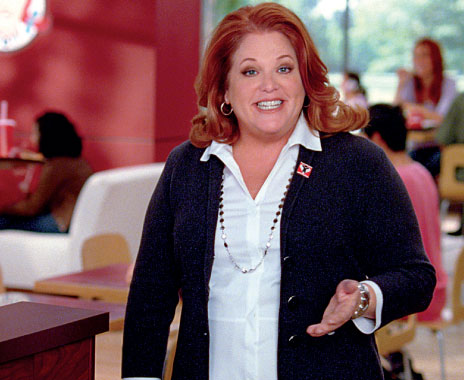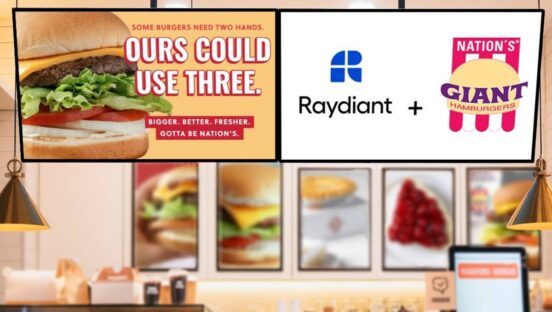Back in 1992, Wendy’s founder Dave Thomas created the Dave Thomas Foundation for Adoption (DTFA), a nonprofit embracing a laser-like commitment to driving adoption awareness and increasing the adoption of children from America’s foster care system.
This past March, Wendy’s placed adoption and its intimate link to the cause front and center with the company’s first-ever national marketing campaign designed explicitly to raise awareness for foster care adoption.
“[The adoption cause has been] part of our DNA for many years, but it was time for us to integrate it into a national marketing effort to raise awareness … and to get credit for what we’ve done in this area,” says Liz Geraghty, Wendy’s vice president of brand marketing.
For Thomas, the adoption issue was a personal one. Adopted at six weeks old, Thomas emerged a prominent national advocate for adoption, leveraging his national reputation to fuel awareness across the country. At the invitation of then-president George H.W. Bush, Thomas served as the spokesman for a national adoption awareness campaign. Later, he lobbied other corporate CEOs to create adoption-friendly workplaces and funneled proceeds from his two books, Well Done! and Dave’s Way, directly to his namesake foundation.
Though Thomas passed away in 2002, Wendy’s continued the personal mission of its founder and its support of DTFA, though in subtle ways. The Ohio-based chain placed donation canisters near cash registers and hosted charity golf tournaments. These efforts helped DTFA match more than 4,000 children in foster care to families and hire specially trained workers to facilitate pairings.
“[Dave Thomas] allowed his name, his face, and his brand to be uniquely associated with an issue that was not talked about 22 years ago … and his longstanding support allowed us to get in the door with this conversation,” says DTFA CEO Rita Soronen.
Even so, few consumers were aware of Wendy’s philanthropic efforts. The quick serve’s new campaign, however, is turning on the spotlight.
In new national TV and radio spots, Wendy Thomas, Dave’s daughter, discusses her father’s legacy and the company’s personal connection to adoption. Wendy’s also created a new adoption hub on its website that shares adoption-themed multimedia content; launched the “In Their Own Words” video series to provide compelling real-world stories from adopted children and their families; and committed itself to in-restaurant promotions, including Wendy’s popular Frosty Key Tags and Halloween Coupon Books.
“We’re using the power and voice of our brand to give a voice to foster care,” Geraghty says.
Bruce Burtch, a cause marketing pioneer who spent more than 35 years developing similar campaigns for companies across the U.S., credits Wendy’s for putting its recognized brand behind a major national issue and doing so with focus and purpose.
“I like to see an organization pick a cause and put their clout behind it versus jumping around to a bunch of different issues that have no connection to the brand,” Burtch says. “I’m a big believer in focus and believe that something that aligns across the organization will have much more impact.”
For Wendy’s, which now has more than 6,500 restaurants spread across the globe, stepping out to tout its 22-year-old efforts to support adoption comes at an opportune time. In the midst of an aggressive brand transformation, highlighted by remodeled restaurants and inventive new products, the national cause marketing campaign fits neatly into Wendy’s push for a refreshed public image.
Burtch says the biggest difference between Wendy’s campaign and another chain supporting a cause like breast cancer awareness is believability. There’s an existing and established connection between Dave Thomas, Wendy’s, and adoption that consumers can recognize as genuine and authentic, not forced or contrived, he says.
“Dave Thomas is so identified with the company, and there’s a natural association between the man, his moral compass, and his business,” Burtch says. “While this cause has nothing to do with food, it’s believable and transparent.”
Wendy’s embraced the endeavor understanding the investment required, while possessing a belief that the campaign would deliver favorable impressions and, ultimately, sales. “It’s really about continuing to build goodwill with our consumers … and this is a connection we want to show,” Geraghty says. “We know today’s consumers are interested to know how a company is doing good.”
Burtch says Wendy’s is “driving a message that is driving the organization, but should also have a major impact on a cause important to them.”
He adds that the benefit to Wendy’s is clear: The campaign identifies Wendy’s as a sound, responsible corporate citizen and spotlights what the quick-service chain stands for and how it desires to do more.
The yearlong effort should provide value to both Wendy’s and DTFA. Soronen says the national campaign is a dynamic way to celebrate and elevate a 22-year-old partnership and drive substantial change, particularly for the estimated 134,000 foster children awaiting adoption.
“It’s a competitive world for scarce dollars, and [Wendy’s support] will raise awareness for the cause and our foundation that will allow us to continue what we’re doing in a more robust way and place more kids in homes,” Soronen says.










